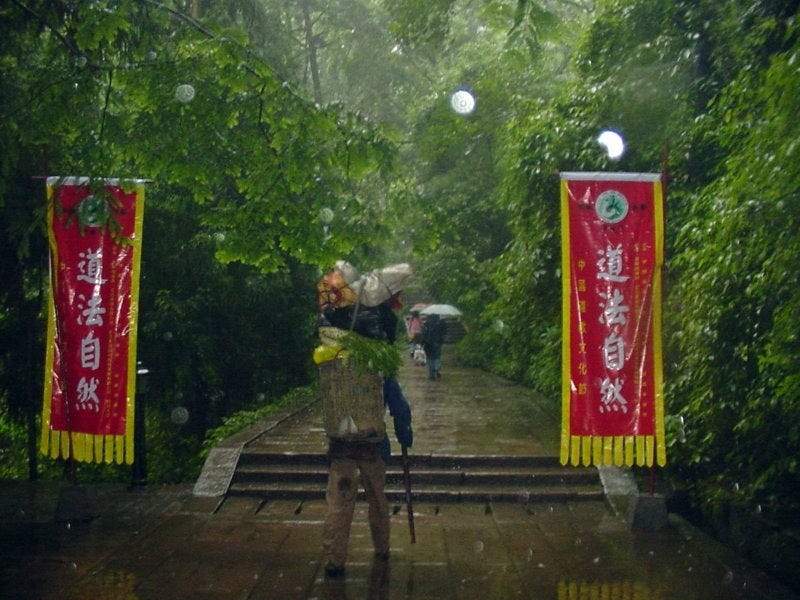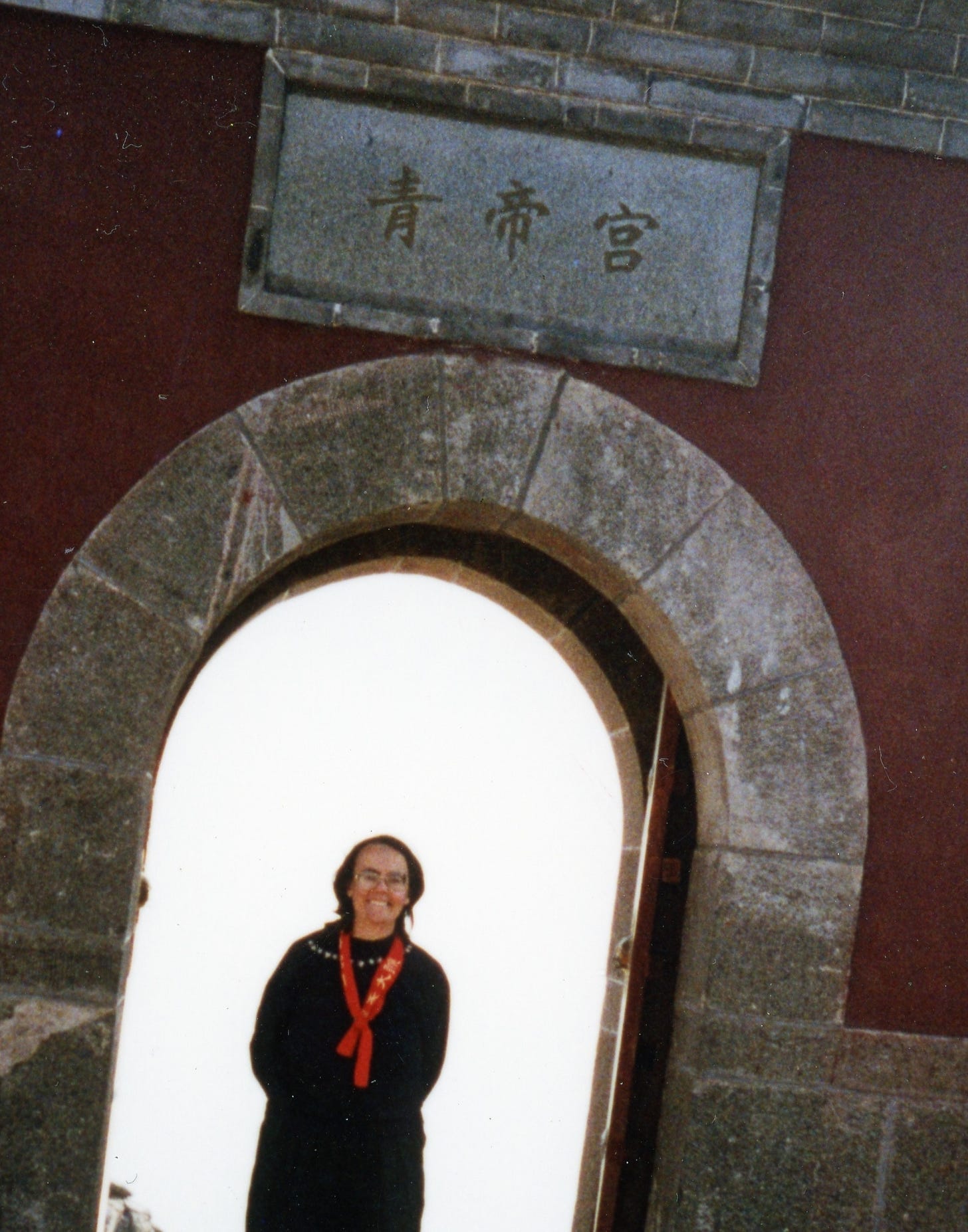Some moments in time shiver through life, paying no heed to clock nor calendar. When you live them, pass through them, they seem like any other day—the texture of air, the relentless surge from morning till evening, the bright sun invigorating the greenness of things, but in the end they turn out to be something more. Like nodal patterns from a standing bell, or river ripples from a tossed stone, these moments send pulsations throughout a lived life, forming the pattern of things yet to come. This was one of those days, when an out-of-time moment enveloped me in a distinct feeling of the future.1
That paragraph appears in one of the first chapters of my book, describing when I was first asked to become a member of the Evergreen Daoist Temple, 青松观, subsequently ordained as a Daoist, and before I knew it, was spirited off to turn-of-the-century Beijing, for a remarkable, historic, ceremony.
Have you ever had an experience where you had a deep knowing that this event, this place, this person, or this time-frame, would influence you for the rest of your life?
A moment where your senses were heightened, where the very air around you was tingling?
Maybe you felt like you’d stepped through a portal.
Maybe, instead, an event happened - a new job, an invitation to theatre play or exhibition - that proceeded as banally as the next moment, but in retrospect, you realise it was a pivotal moment in the unfolding of your life.Arriving at White Cloud Temple in Beijing, the centre of Daoism for over a thousand years, was one of those moments for me. I was there with a delegation from 青松观 Qing Song Guan, the Evergreen Daoist Temple, to participate in an historic ceremony in the Chinese capital.
It was a celebratory atmosphere, that autumn in Beijing. The first large gathering of Daoists since the Cultural Revolution had been organised by 青松观 Qingsong Guan’s Abbot Hou Baoyuan, along with the abbots of 白云观, Baiyun Guan - Beijing’s White Cloud Temple - and Taipei’s Zhinan Gong.
The large, sprawling complex was filled with people of all ages, who’d come to worship their gods, and celebrate the return of their religion. The melodic chanting of nuns and monks reverberated through the sprawling temple grounds. Incense filled the air.
The ten-day series of rituals was such an extraordinary event that I’ve had trouble writing about it. It was so majestic that even decades later I find it difficult to express the feeling of being there. The deeply spiritual, historically important, essentially joyous ritual gathering enveloped me in a profound peace, leaving me with eternal gratitude for having been part of this momentous occasion. It marked the time when Daoism came out of the post-Cultural Revolution haze, heralding a flourishing of the ancient tradition throughout the country.
It was also the beginning of my journey through the heart of Dao, in it’s ancient homeland. It signalled my travels through mountains and across rivers, that would take me to high peaks, verdant countryside, and ancient temples; a journey through the soul of China.
Eventually I got to Qingchengshan. It was raining.
I left Qingdao in the summer, taking a slow train to Chengdu, to present a paper at a Daoist conference. All the trains were slow in 2004, allowing ample time to rest, relax, watch the scenery go by, and make new friends at the boiling water dispenser, where endless cups of tea were made.
After the conference was over, we travelled to nearby sacred mountains. It was raining lightly when we arrived at Qingcheng Shan. The trees were glistening, the air smelled of vegetation and was rich in oxygen. The rain hadn’t stopped pilgrims from climbing the green mountain. Old folks with canes, backpackers laden with goods, families and pilgrims, all carrying umbrellas or dressed in rainwear.
A traditional archway with double upturned eaves and colorful statues of deities on top, inscribed with the words Qing Cheng Shan, led to slippery steps. This was the mountain gate, right at the beginning of the path. “Accept the eight hundred views that your eye can see now, climb to the summit of the thirty-six peaks,” read the couplets on the side of the gate. The range does, in fact, have thirty-six peaks, with the highest one being the Laojun, where a temple to Laozi stands.
It’s said that Huang Di, the Yellow Emperor, the mythological ancestor of all Chinese people, learned Dao in this green mountain. 2

My travels continue here
Pop into the chat on Tuesday to talk about the mountains, Dao, my publishing journey, the word 心 xin, (heart), or anything else you want to chat about. Let’s celebrate your successes and milestones too. You can share them in the chat now, and we can discuss on Tuesday!
道贯古今
dao guan gu jin
bringing dao from ancient times to modern
From Into the Mountains, Exploring China’s Sacred Daoist Peaks., p 3.
ibid, pp 82-83







I really enjoyed this post Debbie. It's interesting to reflect on those pivotal moments in life.
Debbie, Congratulations on your book! I was touched reading the beautiful words to get a glimpse of your journey. Looking forward to reading your book.